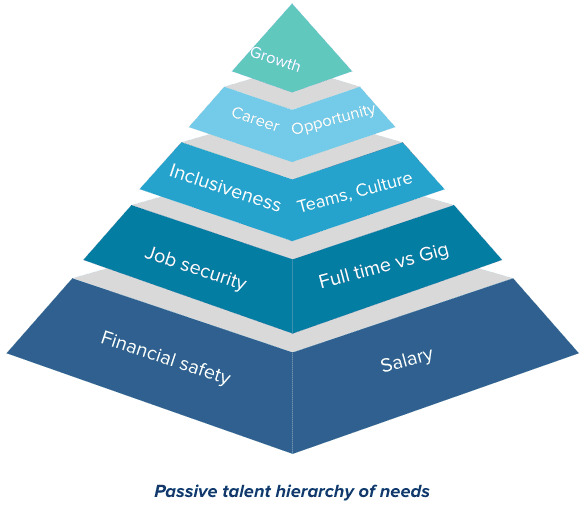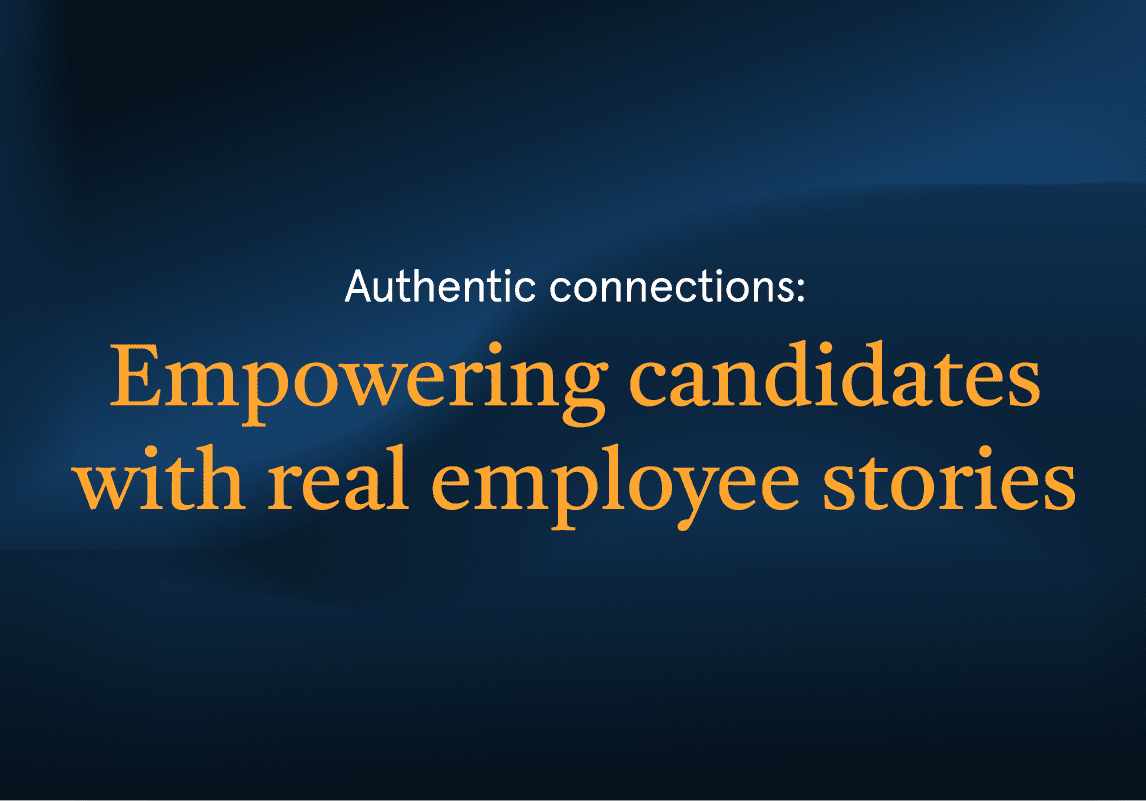The answer is: well before they have even decided to leave their organization.
Speaking with the Clinch team, recruitment marketing expert Don Locke from The HireKey advises TA teams to start engaging passive talent early. “Waiting to build pipeline only when a requisition is opened is not the best method of attracting top talent,” Locke says. “Building a relationship with prospects and understanding the journey of the talent the organization wants to attract is key to being the employer of choice.”
Organizations seeking to stay ahead of market and talent demands are transitioning away from reactive ‘post and pray’ techniques and focusing on proactive sourcing and candidate engagement. Executing a proactive recruitment strategy successfully requires an understanding of the psychology of change, the way it influences the mindset of the passive non-jobseeker and how we, as recruiters, can use this insight to capture this passive target audience better.
What are the needs of passive talent?
As humans, we are inherently resistant to change – consider Maslow’s Hierarchy of Needs. During times of uncertainty, people often revert to their most basic needs. For passive talent, this would correlate to prioritizing financial and job security – the ‘known’ of their current work situation versus the ‘unknown’ of new job opportunities.

As we start to engage and nurture passive non-jobseekers, the more comfortable we can make them, the more trust we can build, and the less resistant they’ll be to change.
By delivering the right content at the right time, addressing a candidate’s ‘hierarchy of needs’ allows passive talent to start engaging with the organization in a meaningful way. Doing this drives the behavioral outcomes we’re looking for: converting passive talent into applicants and ultimately hires.
But be prepared to “be in the long game with talented people” Locke says. “Be honest – sometimes the candidate is not a fit right now. Maybe we can help them in other ways – good feedback, referrals elsewhere. It goes a long way and results in future placements directly or through referral.” In fact, research from Clinch (a PageUp Company) shows that returning visitors to a career site are four times more likely to be hired.
How do we target and engage pools of passive talent?
“The secret sauce is in driving traffic to the career site via the right keywords and sourcing channels”, Locke observes. This doesn’t necessarily mean posting on more job boards, but rather meeting passive talent online where they are.
“Placing the job ad in the right place where you know your target audience will access it. Inviting them to click on content that they will read, like, share and want to join your talent networks. This is key to building great talent pools,” Locke says. Organizations building and nurturing their talent networks are reaping the rewards with 66% of candidates applying for roles via talent networks, reducing the cost and time to recruit hard to fill roles.
How do you maximize the amount of ‘face time’ with this passive audience?
“Always look for ways to improve the process and repetitive tasks that need automating, inefficient aspects of the recruitment process can be addressed,” Locke says. “Anywhere time can be freed allows the recruiter to do the important human aspects of the job. That is how trust is built – spending time with people and not just machines.”
Here’s where recruitment marketing technology like Clinch plays an integral role. It automates manual tasks to free up recruiter time, and delivers actionable insights that show recruiters where they should be spending their time to get the greatest return on investment.
For example, organizations that set up auto nurture nudge campaigns for incomplete applications can see a 20% conversion of potential candidates completing their applications – without recruiters lifting a finger.
When armed with the right data, recruiters can ask the right questions and make agile decisions:
- What sourcing channels the passive talent are originating from?
- What content are they engaging with?
- How often and who you should be targeting first?
From Locke’s perspective “content delivery and engagement tracking has been tremendously helpful in getting the skilled quality talent over the line. And we have found in study after study, that the best performers a year or more after hire, were the ones who had many touchpoints in the journey”. Forward-thinking organizations see the value in and are currently building their organic traffic to their career site.
As Locke observes, good things take time. Passive skilled talent are on their own personal journey, and TA teams should be prepared to “start early and be in the long game with talented people.” By building relationships of trust over time (don’t forget their hierarchy of needs), leveraging recruitment marketing techniques and technology, you’ll be able to attract and convert the talent you really want.
The HireKey is a full-service talent acquisition consultancy and recruitment marketing agency and Clinch (a PageUp Company) partner.



